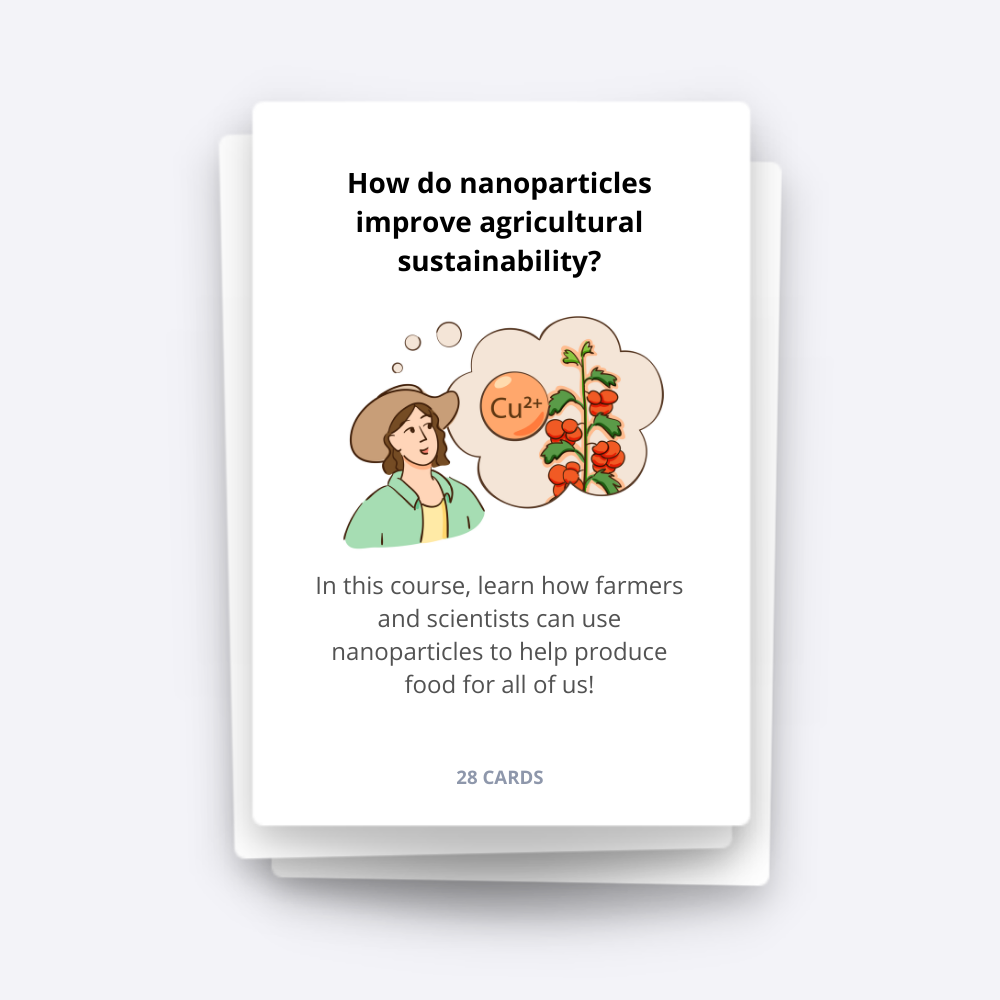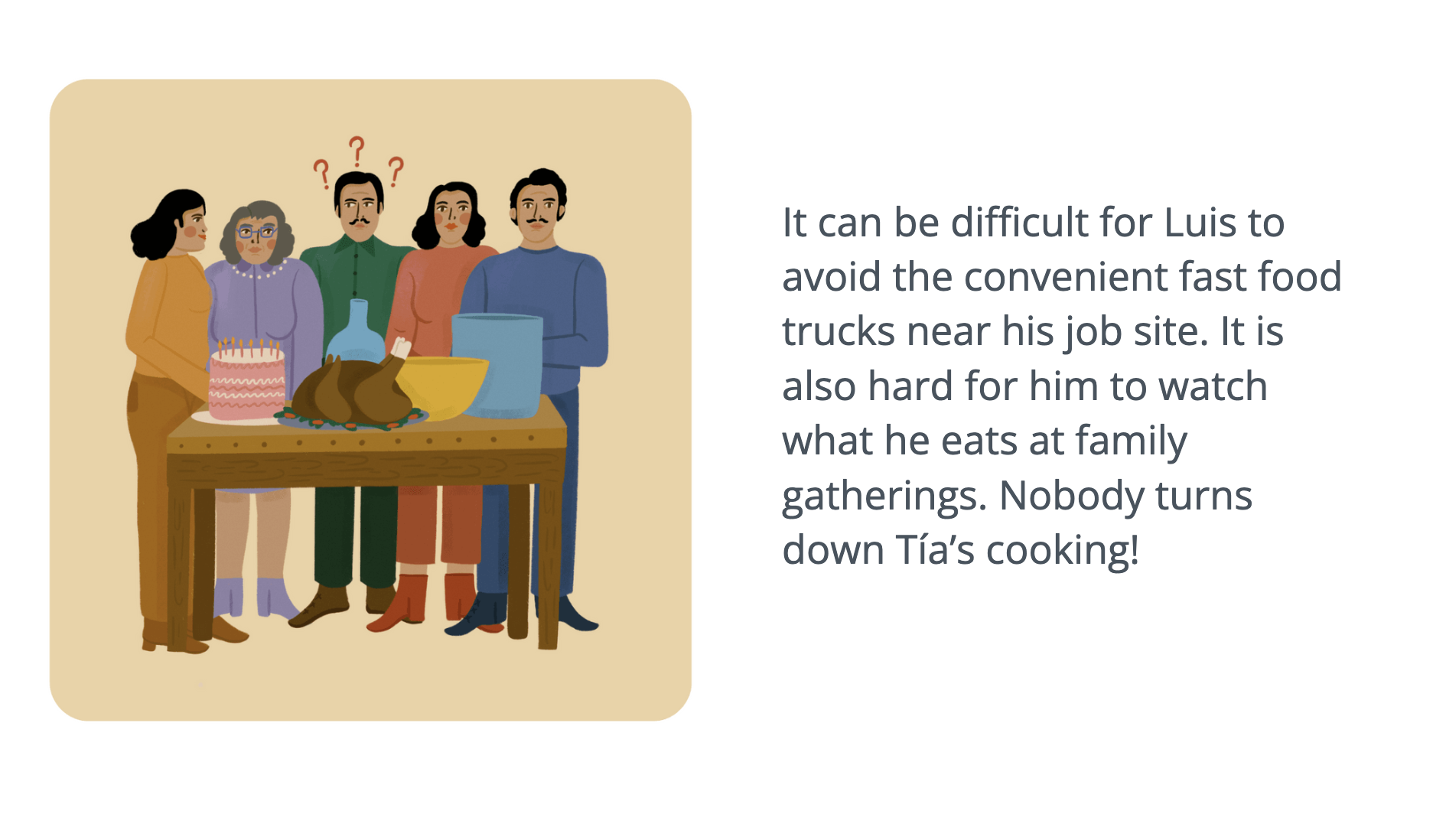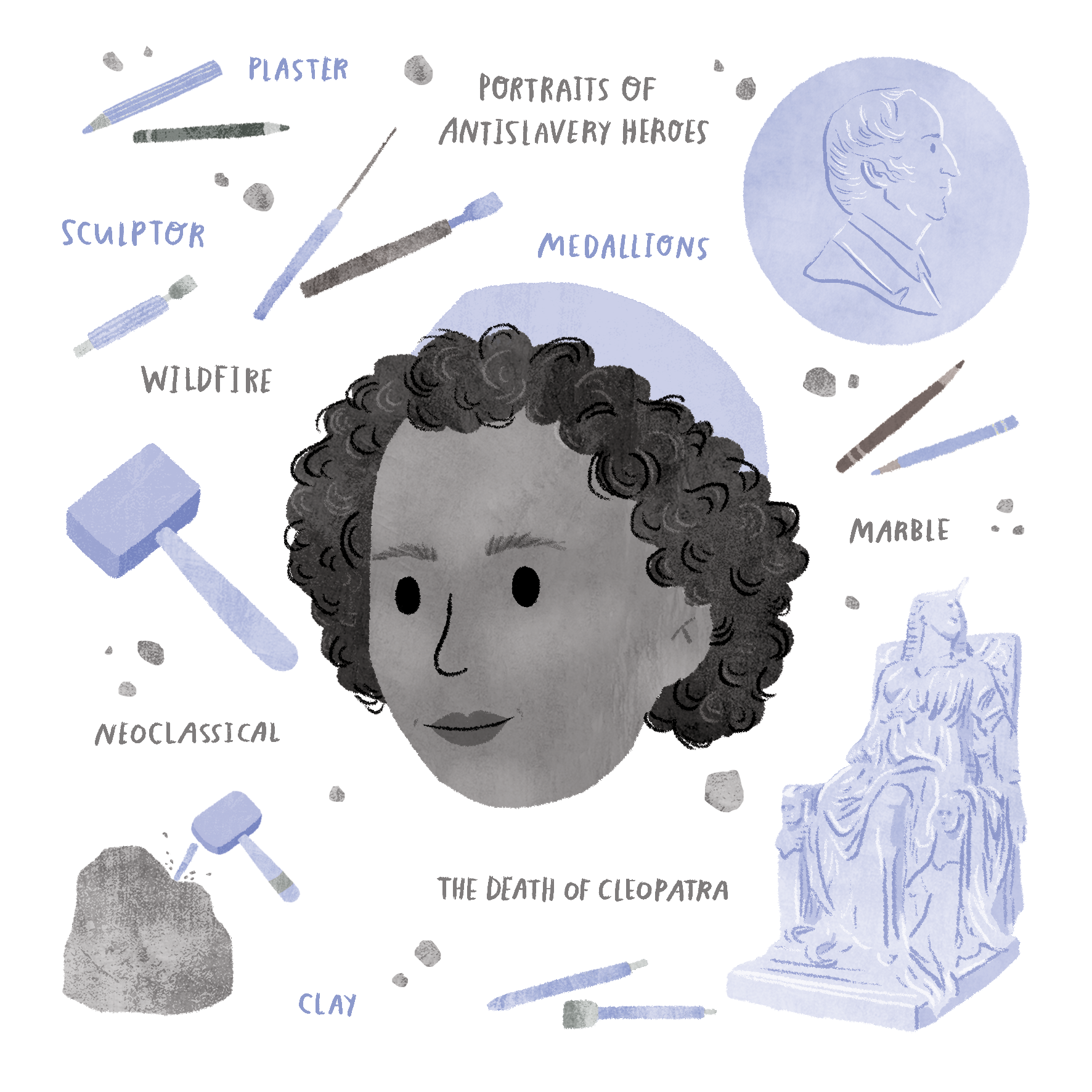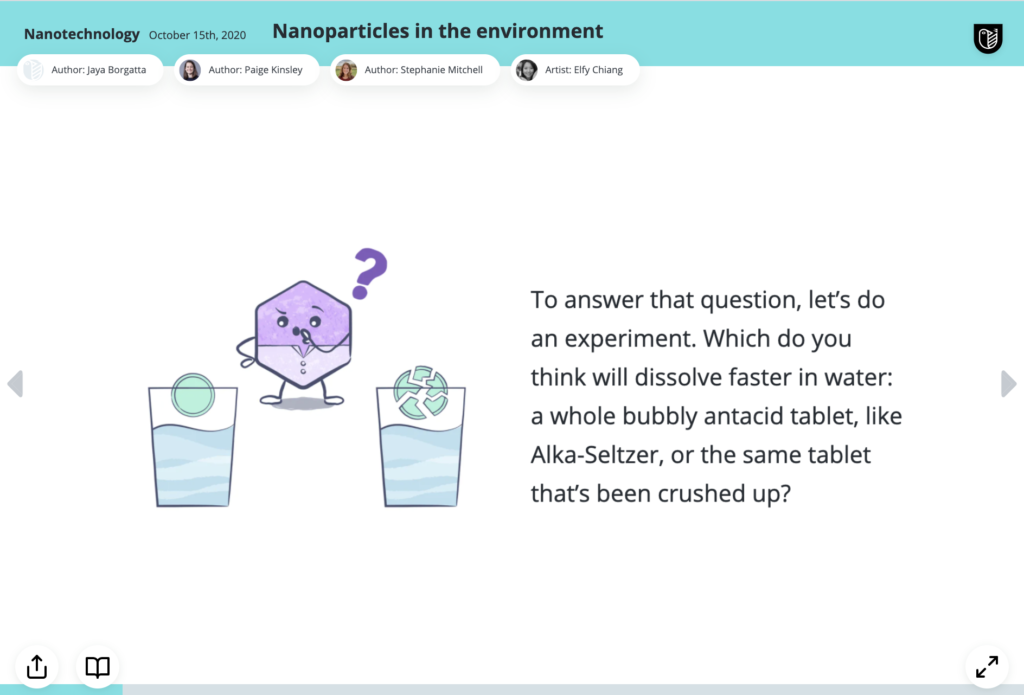
A screenshot from a Lifeology course created by the NSF Center for Sustainable Nanotechnology
Here at Lifeology, we’ve recently been honored to collaborate with The NSF Center for Sustainable Nanotechnology (CSN)! Together we’ve now created two Lifeology “flashcard” courses about how nanotechnology can be applied responsibly to solve real-world problems like growing more plant food, and how we can all be better stewards of the nanoparticles that exist in the devices that power our lives.
“Make sure your facts have function – that’s one of the biggest lessons I learned in the process of collaborating on a Lifeology course. Is this an important piece of information, and why? That has been transformative in how we talk about our science.” – Paige Kinsley, CSN research assistant
Our work with CSN has been unique in that we work primarily with graduate students! Dr. Miriam Krause is the project lead and mentor, but it is the grad students that drive the creation of the Lifeology courses we develop together! Our work together is specifically designed to give students learning and professional development opportunities in science writing, storytelling, project management and collaboration with artists.
“We don’t just say that we want our students to be good communicators, but we actively try new things like this and provide opportunities – like blog writing – for students to become better science communicators,” Miriam said. “The fact that Lifeology was willing to collaborate with us in a way that provided a teaching element as well as a service, like back-and-forth feedback and explanations for edits, was a huge draw for us.”
The Lifeology team has provided detailed content feedback, editing and a structured learning experience for CSN students. But the real magic has been the collaborative work of the CSN grad students (Paige Kinsley, Jaya Borgatta and Stephanie Mitchell) and our Lifeology artist Elfy Chiang, resulting in visual and story-driven information about nanotechnology that fits in your pocket!
The CSN has even created a poster about our collaboration that Paige, Jaya and Steph are presenting at the annual Science Talk conference this year! You can catch their poster presentation here.
“A lot of our conversations have gone back to audience. That has been a big lesson – the importance of knowing your audience and thinking of how to best communicate with them effectively. ” – Jaya Borgatta, CSN graduate student
You can explore CSN’s Lifeology courses below, as well as a Q&A with Paige K., Jaya and Stephanie about their experience!
Q&A
with CSN students Paige Kinsley, Stephanie Mitchell and Jaya Borgatta
Q: Tell us about your experience collaborating on your first Lifeology course!
Stephanie Mitchell: The collaboration was a blast! We knew what we wanted our first concept to be, but it took us a few meetings (multiple hours) to really crystalize our message and understand how much detail was necessary for accuracy and clarity. The initial rounds of editing from Paige and the Lifeology crew really helped flag the times when our writing wasn’t clear. I think we ended up spending the most time on editing. It’s amazing how much word crafting is needed to make a straightforward, engaging, and educational tool in the limited space. With only 180 characters per card, we needed to be sure every single word pulled its weight. If we had any redundant ideas, they needed to reinforce our message in a slightly new way.
I think we grew as writers through the process. Even more, I think we grew as a team. Writing this course was a great way of teaching us how to more effectively communicate our ideas with each other and openly critique the writing.
We were all on the same page when it came to choosing an artist collaborator. I think we were all really excited when we saw Elfy’s art and the creativity and clarity she achieved with an image. Seeing the images she produced really just blew us away!
Paige Kinsley: The collaboration was both fun and a great learning experience. Paige Jarreau and the Lifeology crew were really helpful in getting us to focus and refine the topic and message we wanted to get across. Writing the course with Steph and Jaya was also wonderful, since, even with a common background on the topic, we all still had different ways of communicating and thinking about scientific concepts. That we were able to combine our ways of thinking so seamlessly was kind of magical.
Finding an artist was like finding the best treat in a candy store. There were so many talented artists to choose from, and it was kind of unbelievable that we were going to have one of them turn our words into art. Seeing the first round of storyboarding was awe-inspiring. Elfy is so, so talented, and what she created for us was beyond anything I ever imagined. Her background in science made clarifying and communicating concepts really easy.
Jaya Borgatta: Working on the course was a wonderful experience. It was a really collaborative process. Working with Paige K. and Steph taught me a lot about the importance and nuance in language. We were able to have really open conversations about what wasn’t clear and we worked constructively together to create more impactful statements. Working with the Lifeology team helped clarify the text further, it was great to hear the perspective from people outside of our field on what was being portrayed. It was also helpful that the Lifeology team was science-minded because they could really understand what we were going through.
Working with Elfy was incredible. She really quickly understood what we were going for in the text, and made images that were beyond our highest hopes. She created beautiful, clear, and adorable illustrations that really brought the course to life.
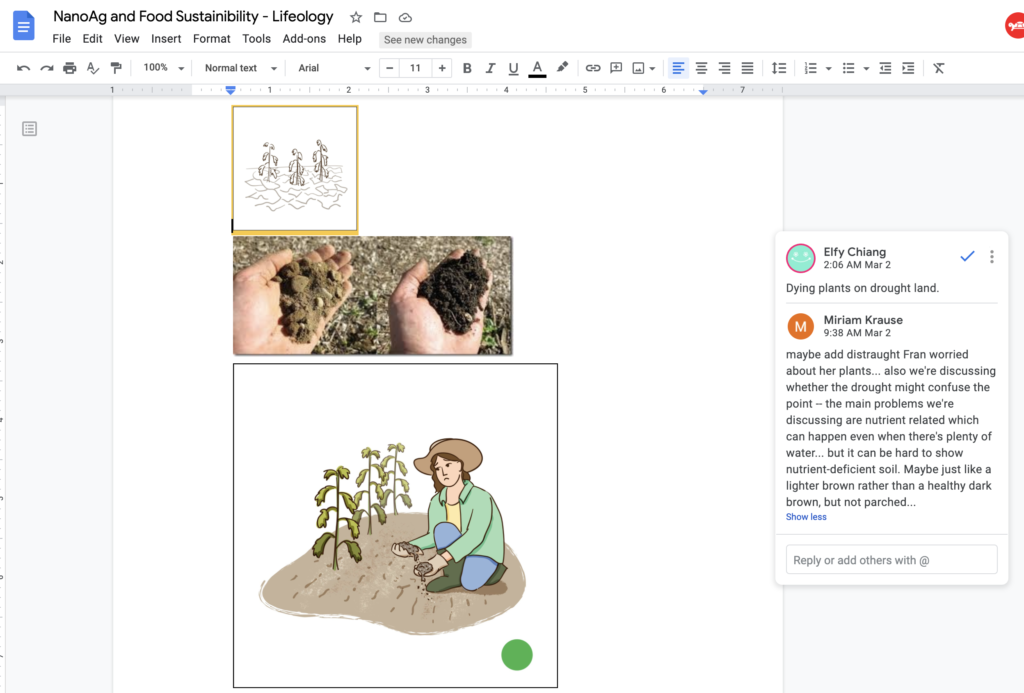
Storyboarding and multiple rounds of feedback at the sketching phase of creating the art for each card is part of the Lifeology course creation process.
Q: Lifeology courses use a card format where an image is displayed with around 180 characters of texts. Did you find this format challenging? Did you learn anything from the science writing process?
Steph: Yes, this format was challenging. When we started brainstorming what kind of story we wanted to tell, we had WAY too much material and detail. But during the process of cutting back and finding our core message, I think we were able to develop a strong and clear message. I think we also learned when we needed to be clearer with the text and when we could rely on an artist’s rendering to really bring the course to life!
Paige: Keeping things succinct was quite difficult. Also, making sure that each card flowed well to the next while avoiding redundancy was hard. However, the limitations on the amount of text on the card and the number of cards we could have forced us to think about what we were really trying to communicate, and also forced us to cut through the fluff. Additionally, we were forced to have a lot of conversations about the level of detail and accuracy we needed to go into for each and every science concept, making us ask ourselves “Will people still understand what we’re trying to teach without this detail?”
Jaya: Steph and Paige have great answers here! I agree, we spent a lot of time trying to simplify and clarify our text. It was challenging to strike a balance between reinforcing ideas and limiting redundancy. Helping to create the course taught us a lot about how to structure a story and create a clear flow of information. Having the images, and being able to put information in the images really brought the course to life.
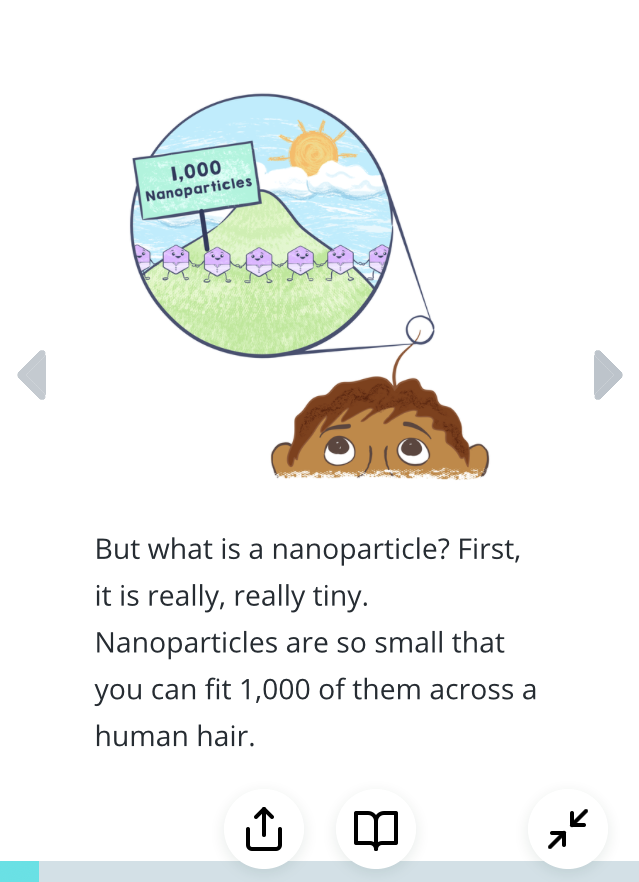
Q: How valuable was the experience of bringing in an artist to enhance understanding of text and image?
Steph: Invaluable. There are so many brilliant artists in the Lifeology community. Not only do they help visualize what is written on the card to provide clarity and engagement, but they enrich the course and make it more accessible in such creative ways. Since our course is about nanotechnology, we had originally been worried that the extremely small size scale would be conceptually difficult to convey. After discussing this with Elfy, she was able to generate some incredibly helpful images that made the key learning concepts much more tangible and understandable.
“When talking about the science we work on every day, it can be difficult to take a step back and think about concepts in the bigger picture and from the point of view of a non-expert.”
Paige: The experience was transformative. Knowing that the cards were going to turn into art was really helpful in keeping us focused on what and how we were communicating our science. Storyboarding with Elfy also helped us think about the concepts differently. When talking about the science we work on every day, it can be difficult to take a step back and think about concepts in the bigger picture and from the point of view of a non-expert.
Jaya: Working with Elfy was awesome! The images really enhance the information that we were trying to communicate. She was able to creatively represent the information that we were trying to get across in a way that was relatable.
Q: How was your overall experience working with the Lifeology team?
Steph: Awesome! The Lifeology team was quick to respond and easy to communicate with throughout the entire process. Their enthusiasm and engagement with our course and concept made the process even more fun and rewarding.
Paige: Amazing! We got great feedback from the Lifeology team, and they were quick and clear in all our communications. Their excitement about our work got me even more excited for the course.
Jaya: Working with the Lifeology time was great! It was really seamless to meet and collaborate. The perspective of the Lifeology team taught me about simplifying language and making science as accessible as possible.
Q: What has been the impact of the course so far?
Steph: So far the course has been very well received! We developed a character, a nanoparticle named Lee. Lee has been a big hit with our collaborators! We’re looking forward to being able to share this course and art during in-person outreach in the future, too.
Paige: We had a lot of really positive feedback from other researchers in the Center for Sustainable Nanotechnology. I also received really positive feedback from my family and friends who are non-scientists.
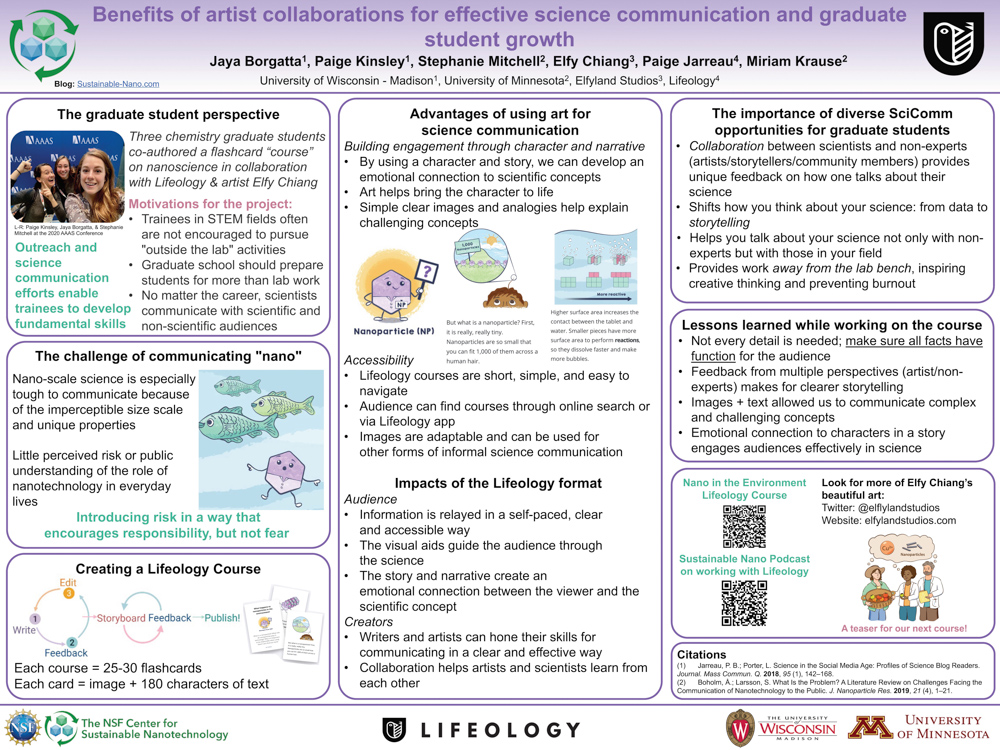
Check out the CSN-Lifeology poster, presented at Science Talk 2021!

